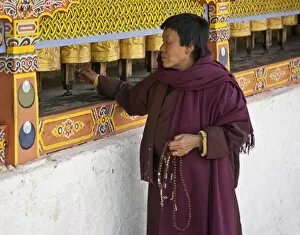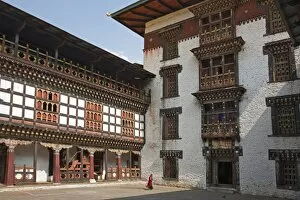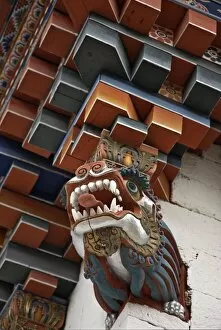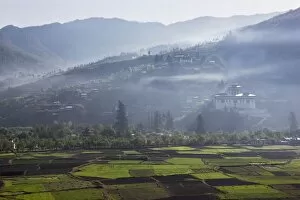Bhutanese Architecture Collection
Bhutan: Land of Dragons and Divine Architecture A woman, prayer beads in hand, spins brass prayer wheels at the 18th century Chorten Kora
All Professionally Made to Order for Quick Shipping
Bhutan: Land of Dragons and Divine Architecture A woman, prayer beads in hand, spins brass prayer wheels at the 18th century Chorten Kora, murmuring invocations to protective deities. (Trashi Yangtze) The 17th century Trashi Yangtze fortress and monastery, a short distance from the town, stands proudly, combining religious and military functions, some 550 km from the capital. The impressive Dzong, or fortress, at Trashigang, built in 1667, overlooks the confluence of the Drangme Chhu and Gamri Chhu rivers. Its intricate roof detail showcases a dragon carving, symbolizing Bhutan's mythical heritage. (Trashigang Dzong) A new temple near Kurjey Lhakhang boasts a roof adorned with a dragon at its base, reflecting Bhutan's architectural traditions and reverence for these mythical creatures. Jakar Dzong, a 17th century fortress, overlooks the picturesque Chokhor valley, its commanding position a testament to Bhutan's rich history. Typical Bhutanese houses bear phallic paintings, reminders of the 15th century saint, Lama Drukpa Kunley, whose unconventional teachings and sexual exploits are celebrated. The second oldest Dzong, Punakha, is the Palace of Great Happiness, a 17th century fortress and monastery nestled between the Mo Chhu and Pho Chhu rivers. Monks blow long horns called dung-chen at the temple of Wangdue Phodrang Dzong, their resonating sounds echoing through the valley. The 16th century Paro Dzong, or the fortress that sits on a heap of jewels, is a must-visit, its grandeur and significance in Bhutanese history undeniable. Once again, we journey through Bhutan, a land where ancient traditions intertwine with architectural marvels, creating a unique and enchanting tapestry.








